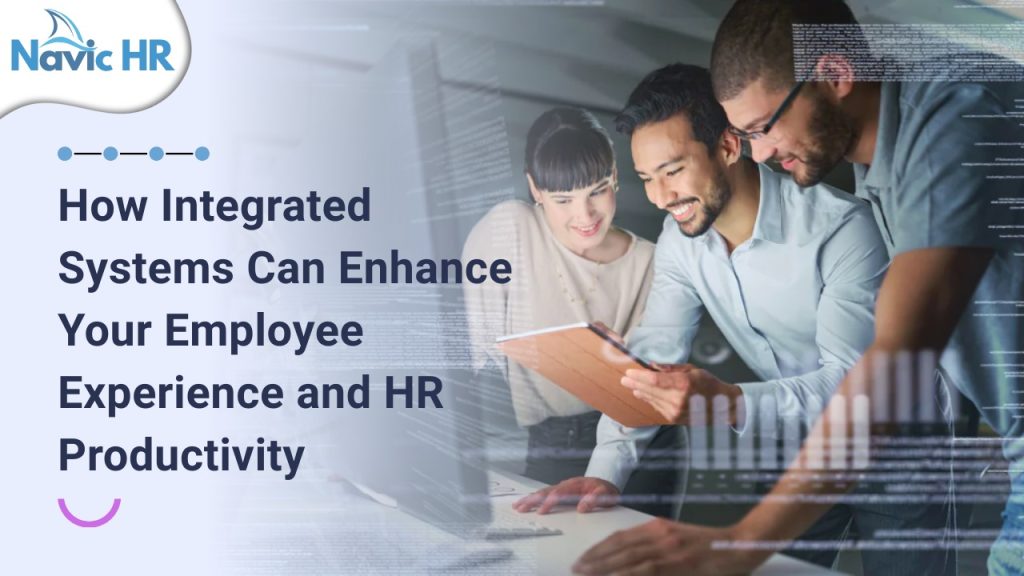
Modern workplaces are fast-paced and demand efficient systems to keep everything running smoothly. For HR teams, managing a wide range of responsibilities can feel overwhelming without the right tools. And for employees, scattered processes can be frustrating. This is where integrated HR systems come to the rescue, simultaneously enhancing the employee experience and boosting HR productivity.
What Are Integrated HR Systems?
Integrated HR Systems combine various HR functions into a single, seamless platform. Instead of juggling separate tools for payroll, recruitment, onboarding, performance management, and employee engagement, everything is centralized, automated, and interconnected. This holistic approach ensures smoother workflows and better communication between HR and employees.
Benefits of Integrated Systems
1. Centralized Data for Easier Access
With integrated systems, all employee-related data is stored in one place. Whether it’s attendance records, payroll details, or training progress, HR teams can access what they need without switching between multiple platforms. Employees, too, benefit from easily accessing their information, like leave balances or benefits, through self-service portals. This streamlining eliminates confusion and reduces errors that stem from scattered data sources.
Example: Imagine an employee needing quick access to their latest payslip. Instead of contacting HR and waiting days, they can log in, download it instantly, and move on with their tasks. HR saves time, and the employee feels empowered.
2. Automation of Time-Consuming Tasks
Routine HR functions, such as processing payroll, sending reminders for performance reviews, or tracking leave applications, are often time-intensive. Integrated systems automate many of these tasks, giving HR teams the freedom to focus on strategic priorities like employee development or organizational growth. Automation doesn’t just save time; it also ensures greater accuracy in repetitive operations.
Example: A system that automatically calculates taxes, deductions, and benefits during payroll processing reduces human errors and ensures timely payouts, earning employees’ trust and appreciation.
3. Improved Employee Experience
A poor employee experience can lead to dissatisfaction, low morale, and high turnover rates. Integrated systems make employees feel valued by simplifying tedious processes like leave requests, expense reimbursements, or career development planning. When employees see streamlined operations and consistent communication, they feel more engaged and connected to the company.
Example: An integrated performance management module can allow employees to set goals, track progress, and receive real-time feedback from their managers. When this is linked to rewards or career advancement opportunities, employees are encouraged to grow and stay motivated.
4. Enhanced Communication and Transparency
Integrated systems often come with built-in communication tools, announcements, or notification features to streamline interactions between HR and employees. From policy updates to individual performance feedback, these tools encourage transparency and ensure everyone is on the same page.
Example: Employees can receive alerts for upcoming training sessions, policy changes, or pending approvals. Meanwhile, managers gain insights into team performance metrics, helping them guide and support employees proactively.
5. Real-Time Insights and Analytics
One of the standout features of integrated systems is their ability to provide real-time reporting and analytics. HR teams can analyze trends like employee turnover, engagement scores, or training effectiveness to make informed decisions. Employees also benefit through personalized recommendations, such as training courses that align with their growth areas.
Example: If analytics show a high turnover in a particular department, HR can act decisively to resolve issues, boosting retention and creating a better work environment.
6. Seamless Onboarding and Offboarding
An employee’s first and last impressions often shape their views of the organization. Integrated systems simplify onboarding by automating form submissions, training schedules, and introductions to company culture. Similarly, offboarding processes become more professional and organized, protecting both the company and the departing employee.
Example: During onboarding, an integrated system can send task reminders to new hires, like setting up their email access or attending compliance training. They feel welcomed and prepared, enhancing their first experience.
Final Thoughts
Integrated systems revolutionize HR processes while enriching the employee experience. By centralizing data, automating tasks, and facilitating seamless communication, they save time, reduce stress, and promote productivity across the organization. When employees encounter smooth workflows and consistent support, they are happier, more engaged, and more likely to stay.
For HR teams, these systems are a game-changer. They free professionals to focus on strategic initiatives while reducing administrative burdens. Investing in an integrated HR platform isn’t just about managing people; it’s about creating a cohesive and future-forward workplace.
If your organization is ready to transform, explore NavicHR integrated systems today and unlock new opportunities for both your employees and your HR teams.
